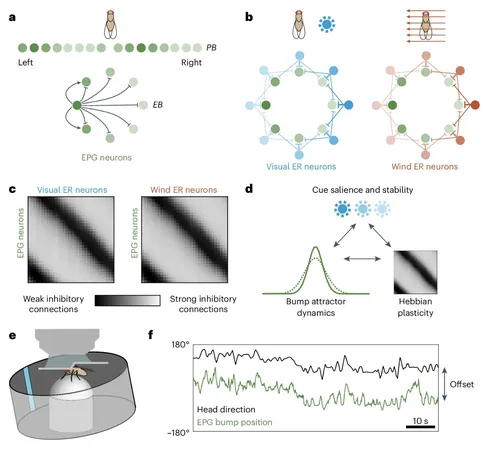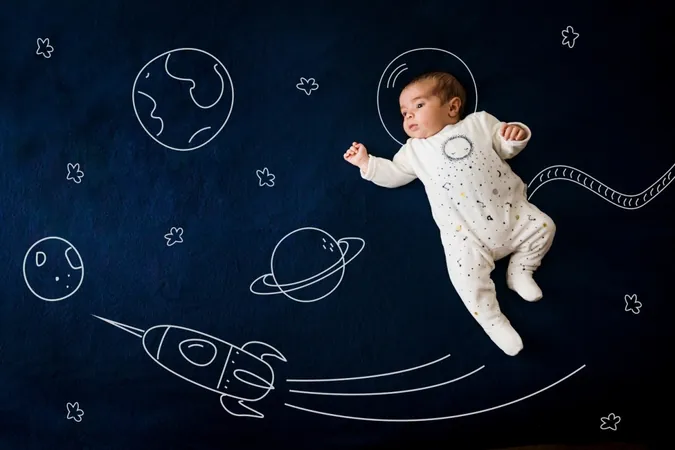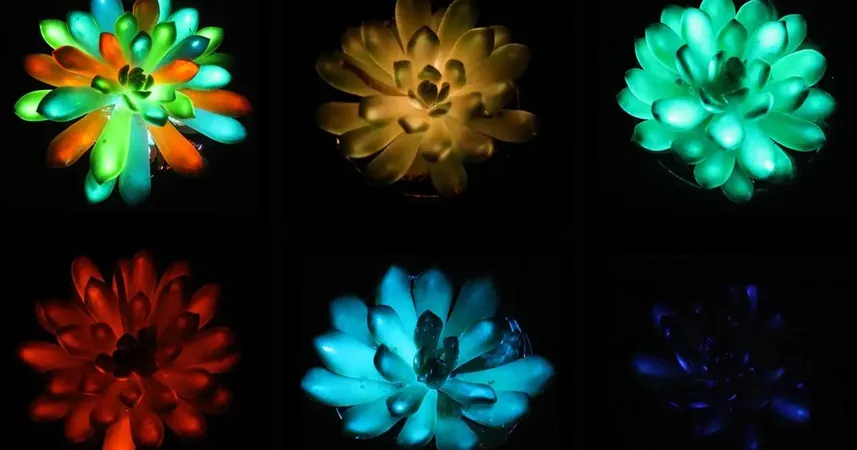
Unlocking the Secrets of Navigation: How Fruit Flies Map Their World
2025-08-26
Author: Wei Ling
The Intricate Dance of Navigation
Navigation is a sophisticated skill that both humans and animals master to maneuver through their environments with purpose. This remarkable cognitive ability hinges on the complex head direction system—essentially the brain's internal compass—that tracks where an individual is facing and helps them orient themselves.
New Horizons in Fruit Fly Research
Recent research from Harvard Medical School has unveiled groundbreaking insights into how fruit flies, or Drosophila, process spatial information. Published in *Nature Human Behavior*, this study sheds light on the neural mechanisms behind the head direction system of these tiny navigators, revealing how their brains create crucial representations of their surroundings.
Unraveling the Neural Network
Led by Melanie A. Basnak and Anna Kutschireiter, the team embarked on a detailed investigation of the fruit fly's head direction system, described as both a 'ring attractor' and a topographic map for orientation. Their innovative approach employed cutting-edge techniques, including population calcium imaging, which allows researchers to track the firing of neurons across the brain.
Revolutionary Techniques for Insightful Findings
By simultaneously monitoring the activity of entire populations of neurons while controlling the visual stimuli through virtual reality setups, the researchers discovered that the accuracy of spatial encoding improves significantly when the cues are clear and informative. The more trustworthy a cue, the heavier the influence it holds, especially when navigating through competing information.
Navigational Nuances and Individual Behavior
Fascinatingly, the study also highlighted the variations in navigational strategies among individual flies. The researchers proposed a model network rooted in the ring attractor concept, suggesting that learning and adaptability come at the price of some instability in how the brain represents spatial information.
Implications for Future Research and Technology
This exciting work not only enhances our understanding of how fruit flies navigate but also paves the way for advancements in bio-inspired robotics and artificial intelligence. The underlying principles of continuous synaptic plasticity revealed by this research could revolutionize our approaches to building smarter, more adaptive machines.
The Balance Between Stability and Flexibility
As the team concluded, their findings reveal a fundamental tradeoff in the brain's navigational systems: the ongoing battle between maintaining a stable representation of the world and remaining flexible enough to adapt to new information. This balance is crucial for survival and effective navigation in ever-changing environments.




 Brasil (PT)
Brasil (PT)
 Canada (EN)
Canada (EN)
 Chile (ES)
Chile (ES)
 Česko (CS)
Česko (CS)
 대한민국 (KO)
대한민국 (KO)
 España (ES)
España (ES)
 France (FR)
France (FR)
 Hong Kong (EN)
Hong Kong (EN)
 Italia (IT)
Italia (IT)
 日本 (JA)
日本 (JA)
 Magyarország (HU)
Magyarország (HU)
 Norge (NO)
Norge (NO)
 Polska (PL)
Polska (PL)
 Schweiz (DE)
Schweiz (DE)
 Singapore (EN)
Singapore (EN)
 Sverige (SV)
Sverige (SV)
 Suomi (FI)
Suomi (FI)
 Türkiye (TR)
Türkiye (TR)
 الإمارات العربية المتحدة (AR)
الإمارات العربية المتحدة (AR)